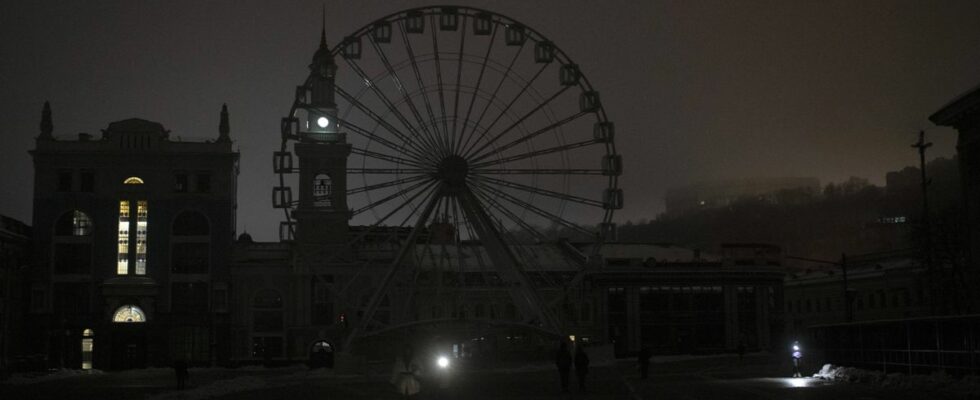With the energy crisis, the possibility of “load shedding” this winter is frequently mentioned. In gas, France has suffered a gradual drying up of flows from Russia and the Russian giant Gazprom must even completely stop its deliveries to the Engie group from Thursday. In addition, half of the French nuclear fleet is unavailable due to scheduled maintenance or problems with micro-cracks that appeared last winter.
But EDF is not certain of being able to restart enough reactors to cope with consumption peaks on very cold days. So the state plans to plan power cuts. But what is load shedding? Who will be affected or spared by these cuts? And how to prepare for it. 20 minutes takes stock for you.
What is load shedding?
These are targeted and temporary supply cuts intended to relieve the system in the event of excessive tension, with a different operation for gas and electricity, and to avoid the “black-out”, i.e. that is to say the generalized and uncontrolled blackout, in the event of tensions between supply and demand. With the energy crisis, the possibility of “load shedding” this winter is frequently mentioned.
This fear of cuts was revived after the latest forecasts from RTE, the high-voltage network manager, which warned in mid-November of a “high” risk of tensions on the electricity system in January, due to the slower restart than expected of EDF nuclear reactors. It is only as a “very last resort” that “load shedding” could be carried out by Enedis at the request of RTE. In all cases, the cuts would take place at times of peak consumption, between 8 a.m. and 1 p.m. in the morning, and between 6 p.m. and 8 p.m. in the evening.
Who is concerned ?
Load shedding could affect 60% of the population. Indeed, some French people will never be relieved because of priority, or connected by chance to a priority line. A share “which concerns 40% of people”, according to the government, adding that the shedding will look like the spots of a “leopard skin”. There will be no entire department offloaded, but only minority parts of the territory, never the same people twice and none of the approximately 3,800 high-risk patients dependent on home medical equipment connected to the mains.
Some 14,000 priority sites determined by a decree dating back to July 5, 1990 will be protected from cuts: fire stations, gendarmerie, hospitals, defence, prisons, etc. A few industrial sites have also been placed on the lists of priority customers, as have classified facilities with generators which now have one month to test their operation.
Will these cuts really take place?
Rotating load shedding, of a maximum of two hours, remains a hypothesis at this stage, particularly in January if the electricity supply becomes a problem. “We would only cut if the cold is confirmed, that we have a production or interconnection problem [avec les pays voisins] and if consumption does not drop”, underlines the government in a circular which asks the prefects to anticipate.
The interministerial crisis unit is working on the assumption that six to ten load shedding will be necessary over the period, and two-hour load shedding affecting six million people at the same time. The interministerial crisis unit is also working on a “blackout” scenario, but without believing in it.
What consequences?
Load shedding could have consequences for education. Indeed, schools likely to be offloaded could remain closed in the morning in order to avoid being without light, heating or alarm. Same thing, public transport could be stopped in order to avoid passengers being blocked in the middle of the road: “Either it goes from start to finish, or we would prefer to interrupt two hours, because being stuck in the metro for two hours is not an option. »
The major concern is on the mobile network. In a circular, Prime Minister Elisabeth Borne notes that “one of the consequences of the interruption of electrical distribution is that it will lead to interruptions in electronic communications [téléphonie mobile et fixe] “. In the load shedding perimeters, “users will not be able to contact the emergency services” such as 15, 17 or 18. It will be recommended to favor 112, accessible regardless of the telephone operator. A complex mapping of the white areas where the telephone relay antennas would be cut off is in progress.
How to prepare for it?
“The idea is that no one is surprised,” said a government source. A red EcoWatt signal would be emitted three days in advance, making it possible to then know one day in advance which departments would be concerned. At 5 p.m. the day before, it will be possible to find out who is affected by the cuts by entering their address on a website of Enedis and RTE, which manage the French electricity transmission and distribution network.
A technical test will take place on Friday November 9 in which RTE, Enedis and the departmental prefectures will participate. The technical teams will simulate load shedding using their computers in order to better prepare for this eventuality.
The authorities also advise installing the EcoWatt application, which allows households to control their electricity consumption. This Thursday, 470,000 people subscribed by SMS, announced the Chairman of the Executive Board of RTE on France Info. He is worried, however, saying that “it’s not enough”.

